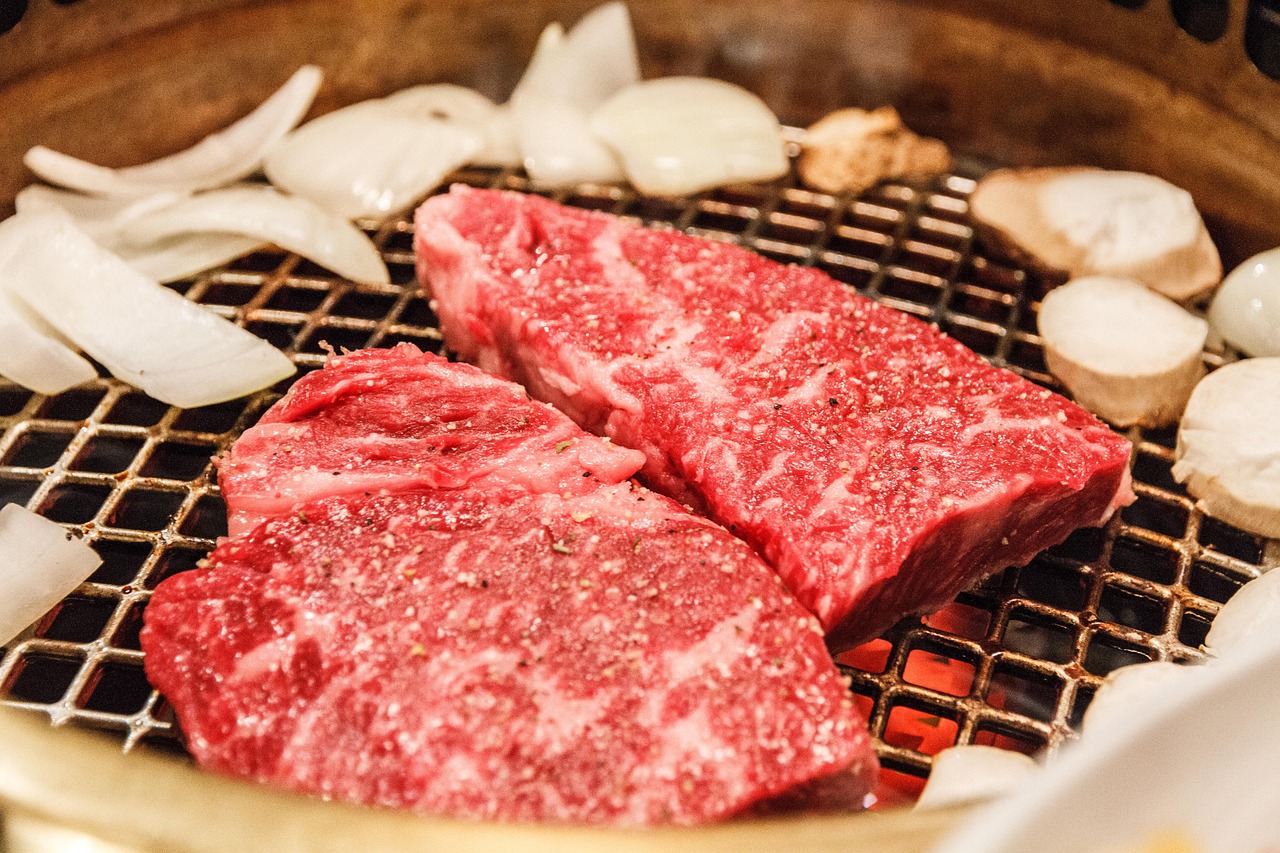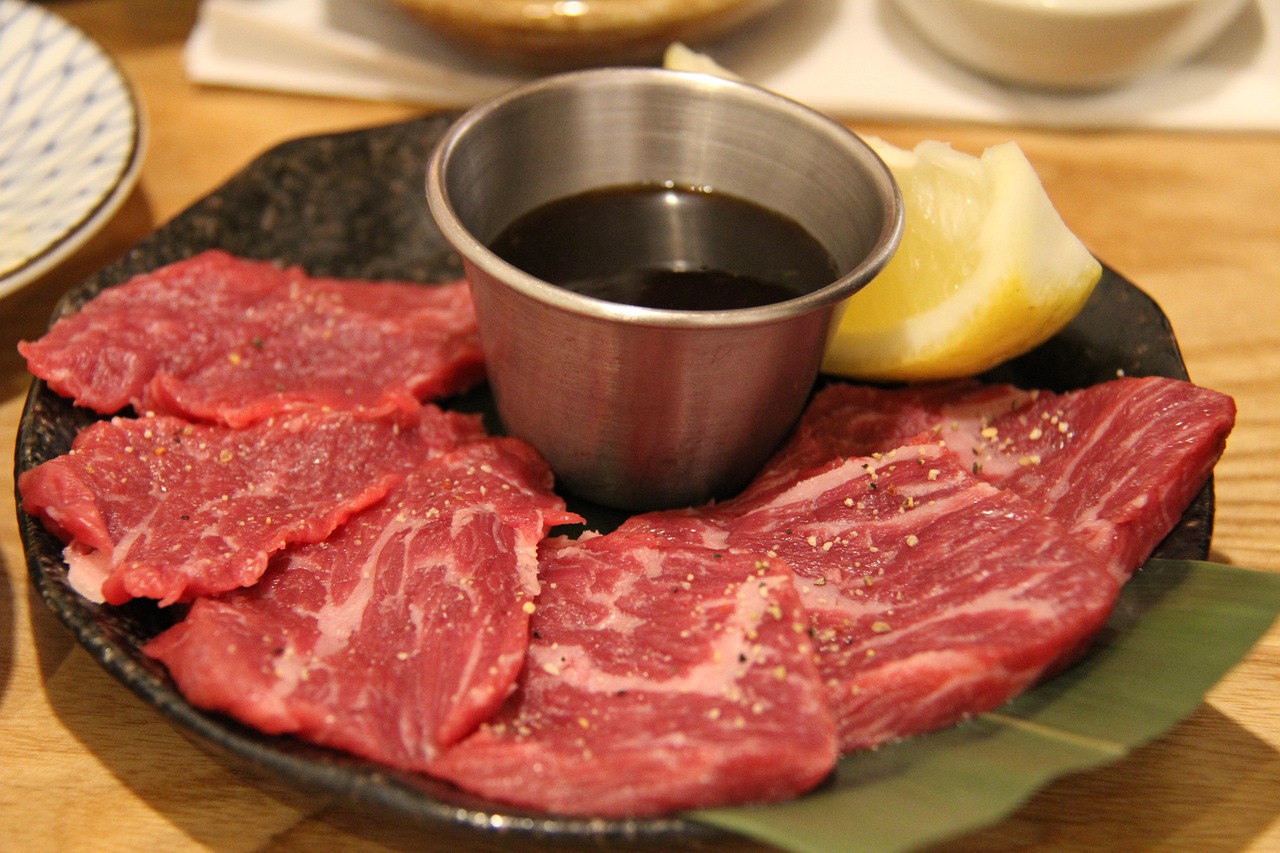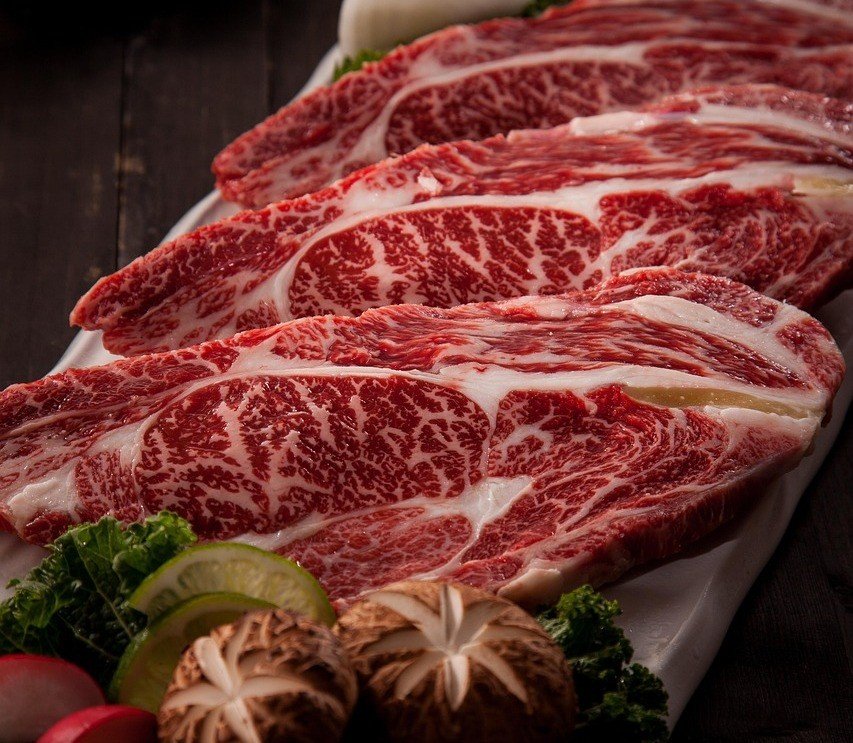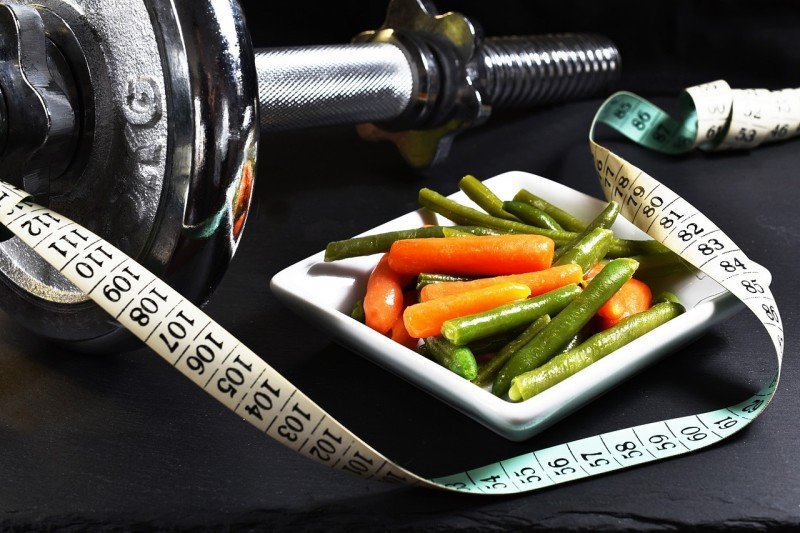Kobe and Wagyu are two popular types of high-quality beef from Japan, but there are some major differences between them. Kobe beef is highly marbled and fatty, whereas Wagyu beef has much more marbling and an intense flavor. Since Kobe beef is produced in the Japanese prefecture of Kobe, it is the most expensive type of beef, while Wagyu is produced in many more locations and therefore more affordable. In this article, we will discuss the differences between Kobe and Wagyu beef and why one might be better than the other.
Definition of Kobe and Wagyu Meats
Kobe beef and Wagyu beef are both types of Japanese beef, each with its own distinct characteristics that set it apart from other beef varieties. Kobe beef is a type of Japanese breed of Wagyu cattle called Tajima-gyu, raised in the Hyogo Prefecture and other parts of Japan.
It is prized for its intense marbling and succulent flavor, and is produced from cows that are well-fed and rest regularly. Wagyu beef is a general term for Japanese breeds of cattle, including Tajima-gyu. Though raised differently than Kobe Beef, Wagyu is also prized for its intense marbling and luscious flavor.
Wagyu cattle are fed a balanced diet of grains and grasses and are regularly groomed and massaged to encourage the muscle development that is associated with the intense marbling.
Breeds of Cattle Used To Produce Kobe and Wagyu Meat
Kobe beef and Wagyu beef are two of the most coveted meats in the entire world. While they do share some similarities, they also have some distinct differences, particularly when it comes to the breed of cattle used to produce them.
Kobe beef is produced from Tajima-gyu, a breed of black Japanese cow. This breed of cow is raised according to strict government regulations, which enforce feeding and farming practices. Tajima-gyu are fed only beer and given massages to promote relaxation, resulting in tender and well-marbled meat.
Wagyu beef is slightly less exclusive, but certainly no less delicious. It comes from four breeds of Japanese cattle: Japanese Black, Japanese Brown, Japanese Polled, and Japanese Shorthorn. Wagyu beef is fed a diet of grain, hay, and straw, producing meat that's well-marbled and packed with flavor.
Differences in Taste, Texture, and Quality
Kobe and Wagyu beef differ significantly in taste, texture, and quality. Both are highly sought after, premium beef types. But each has its own unique characteristics that set it apart from the other.
Kobe beef is known for its tender, fatty texture and umami-rich flavor. This flavor comes from the abundant intramuscular fat that contributes to the overall marbling of the meat. Kobe beef is also one of the more expensive types of beef available to consumers.
Wagyu beef, on the other hand, is widely known for its intense, buttery flavor and juicy texture. Its higher fat content gives it an even more luxurious texture than Kobe beef. It is also renowned for its high fat marbling and unique qualities, both of which contribute to its significantly higher price.
While both Kobe and Wagyu beef are highly sought after, each has its own set of distinguishing characteristics that make them two entirely different foods. From flavor and texture to price and quality, these two types of beef may have overlapping qualities, but their differences are unmistakeable.
Comparison of Production Methods
Kobe beef and Wagyu beef differ in their production methods, which has a significant effect on the quality and taste of the meat. Kobe beef is produced using a traditional Japanese method, while Wagyu beef is produced using more modern methods.
Kobe Beef
Kobe beef is produced using traditional methods. It is fed on a unique mix of grains and grasses, with beer added to the feed to promote appetite. The animals are handled extremely carefully and massaged daily with sake. This is thought to improve the marbling of the fat, while the massage also helps to relax the muscles of the animals, making the meat more tender.
Wagyu Beef
Wagyu beef is produced using more modern methods. The animals are fed on a high-quality grain diet with fewer additives than Kobe beef. Some Wagyu producers use hormone injections to promote faster growth, although this is not generally seen as ethical or necessary. There also tends to be less massaging and fewer pampering techniques used on Wagyu cattle.
Conclusion
Overall, the production methods of Kobe and Wagyu beef differ significantly, with Kobe beef produced using mostly traditional methods and Wagyu beef produced with more modern methods. This has a direct impact on the quality and taste of the meat, with Kobe beef often being highly marbled and incredibly tender.
Comparison of Cost and Availability
When it comes to the comparison of cost and availability, Kobe beef is considerably more expensive than Wagyu beef. Kobe beef is mainly available in Japan, while Wagyu beef is more widely available in the United States and other countries. Kobe beef is usually expensive due to its limited production and the stringent standards imposed by the Kobe beef farmers. Wagyu beef, on the other hand, is generally more affordable, making it more readily available for the average consumer.
Overall, Kobe and Wagyu beef both have their advantages and disadvantages when it comes to cost and availability. For those looking for a premium, high-end cut of beef, Kobe beef is an excellent choice. However, for those on a budget, Wagyu beef offers a more affordable alternative that still offers a delicious, high-quality beef.
Health Benefits of Kobe and Wagyu Meat
Kobe and Wagyu meats are both considered premium beef, renowned for their tenderness, marbling and juiciness. Their reputation for luxurious taste comes with a somewhat hefty price tag, but this top-of-the-line beef comes with its own nutritional profile as well. In addition to the juicy taste, Kobe and Wagyu beef can provide tremendous health benefits.
High in Protein, Low in Fat
Kobe and Wagyu beef are both an excellent source of protein -- about 25 grams per 4-ounce serving. It's also lower in fat than various types of red meat, including pork, lamb and standard beef. Kobe and Wagyu beef's signature marbling means it's high in unsaturated fat, with a smaller percentage of saturated fat.
Omega-3 and Omega-6
Many types of meat contain zero essential fatty acids, but Kobe and Wagyu beef have significant amounts of both Omega-3 and Omega-6 fatty acids. Specifically, a 4-ounce portion of cooked Wagyu beef contains 80.8 milligrams of Omega-3, but just 20 milligrams of saturated fat. Omega-3 fatty acids are known for their cardiovascular benefits and essential function in preventing conditions like diabetes and obesity. Meanwhile, Omega-6 fatty acids help lower bad cholesterol while increasing the good.
High Iron
Iron is a nutrient used in the creation of hemoglobin, the oxygen-carrying pigment in red blood cells. An 4-ounce serving of Kobe and Wagyu beef contains more than 18 milligrams of iron, helping to maintain healthy blood and energy levels. This amount of iron provides more than 100 percent of the daily recommended intake for men and more than 200 percent for women.
Vitamins and Minerals
Kobe and Wagyu beef are high in vitamins and minerals, containing significant daily doses of niacin, thiamine and vitamins B-6 and B-12. These vitamins and minerals have their own specific health benefits, ranging from improved digestion to heightened energy. Kobe and Wagyu beef also contains adequate amounts of zinc, calcium and phosphorus.

Conclusion
In conclusion, the differences between Kobe and Wagyu beef are clear. Kobe beef is more famous outside of Japan, whereas Wagyu beef enjoys more fame domestically. Kobe beef also has a higher fat content and distinctive marbled pattern, whereas Wagyu beef is even more tender, richer in flavor, and has an even higher fat content. Both types of beef have amazing flavor, texture, and aroma, making them highly sought after. So no matter which you prefer, both Kobe and Wagyu beef are excellent options for a delicious meal.



